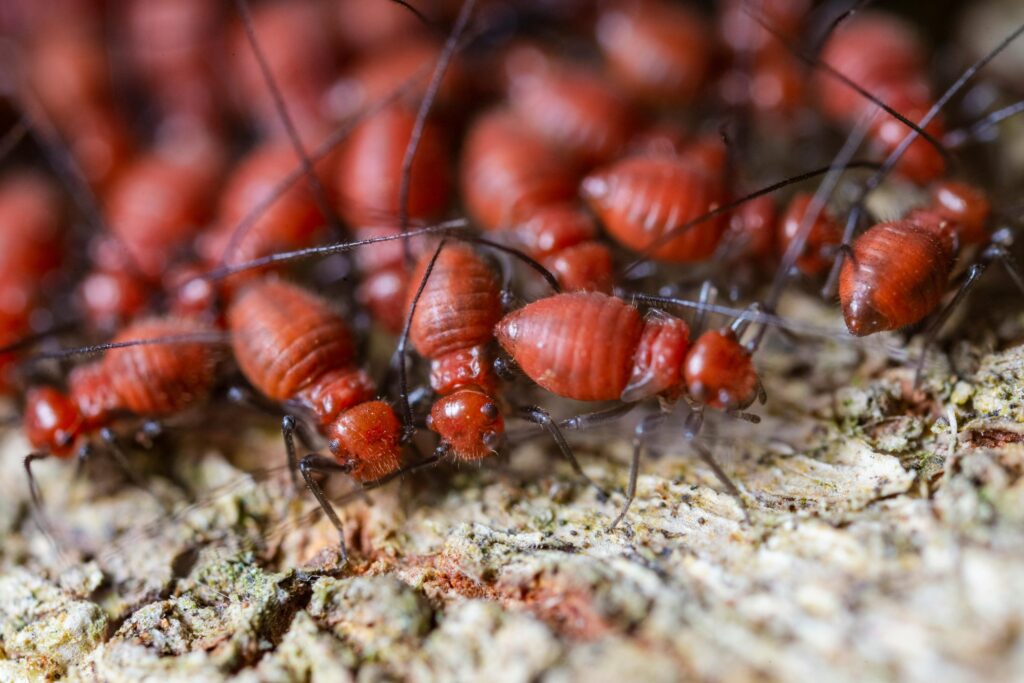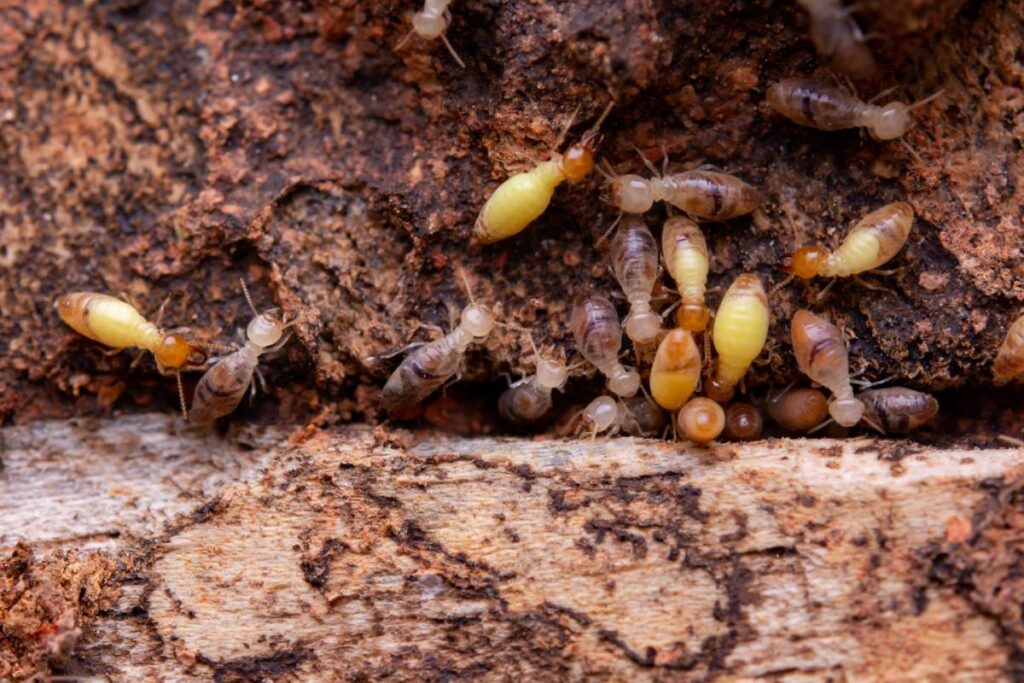Termites are often referred to as “silent destroyers” due to their ability to chew through wood, flooring and even wallpaper undetected. In Sydney, where the climate is conducive to termite activity, it is crucial for homeowners to be vigilant. A termite infestation can lead to significant structural damage, making early detection essential. This article will explore the signs of a potential termite infestation and the importance of regular inspections.
Understanding Termites
Termites are social insects that live in colonies. They primarily feed on cellulose, which is found in wood, paper, and other plant materials. There are several types of termites sydney, but the most common in Sydney are subterranean and drywood termites. Each type has distinct behaviours and signs of infestation.
Subterranean Termites
Subterranean termites build their nests underground, making them particularly difficult to detect. They create mud tubes to travel from their nests to food sources, which can often lead them to wooden structures in homes. These tubes are a key sign of their presence. The colonies can consist of thousands, or even millions, of individuals, with a highly structured social system that includes workers, soldiers, and reproductive members. The workers are responsible for foraging for food and maintaining the nest, while soldiers protect the colony from predators, such as ants. Their ability to consume wood at an alarming rate can lead to significant structural damage if left unchecked.
Drywood Termites
Unlike subterranean termites, drywood termites do not require contact with soil. They can infest dry wood and are often found in attics and wooden furniture. Their presence is usually indicated by the presence of frass, which is a term for termite droppings. Drywood termites are particularly insidious because they can remain undetected for long periods, often until the damage is extensive. They tend to form smaller colonies compared to their subterranean counterparts, but their ability to thrive in dry wood means they can infest a variety of wooden items, from structural beams to decorative pieces. This adaptability makes them a persistent threat, especially in coastal areas where humidity levels are conducive to their survival. Homeowners should be vigilant for signs of infestation, such as hollow-sounding wood or small holes in furniture, which can indicate the presence of these pests.

Signs of a Termite Infestation
Being aware of the signs of a termite infestation can help homeowners take action before significant damage occurs. Here are some common indicators to watch for.
Wood Damage
One of the most obvious signs of a termite infestation is damage to wooden structures. Termites consume wood from the inside out, so the exterior may appear intact while the interior is hollowed out. Tapping on wood surfaces can help detect hollow sounds, indicating potential damage. It is also worth noting that the type of wood can influence the extent of damage; softer woods are particularly susceptible to rapid destruction. Homeowners should regularly inspect areas where wood is in contact with soil, as these are prime locations for termite activity.
Mud Tubes
As mentioned earlier, subterranean termites construct mud tubes to travel to their food sources. These tubes are typically found along foundation walls, in crawl spaces, or even inside walls. They are about the width of a pencil and can be a clear sign of termite activity. These mud tubes serve not only as a protective passage for the termites but also as a means to maintain the moisture they require to survive. Observing these tubes can be alarming, but it is crucial to act swiftly, as their presence indicates that a colony is nearby and actively feeding on your property.
Frass
Frass, or termite droppings, is another telltale sign of a drywood termite infestation. These droppings resemble small pellets and can often be found near infested wood. If you notice frass, it is essential to investigate further, as this could indicate a larger problem. Interestingly, the presence of frass can also help differentiate between types of termite infestations; for instance, drywood termites leave behind a distinct, fine powdery residue, while subterranean termites produce a more granular form. Homeowners should be vigilant in checking for frass in hidden areas, such as attics or behind furniture, where infestations may go unnoticed until the damage becomes severe. Read more about signs of termite infestations at https://www.epa.gov/safepestcontrol/termites-how-identify-and-control-them
Other Signs to Look For
In addition to wood damage, mud tubes, and frass, there are other subtle signs that may indicate a termite infestation.
Swarmers
Termite swarmers are winged reproductive termites that leave the colony to establish new nests. If you notice discarded wings around windowsills or doors, this could indicate that swarmers have been present in your home. Swarming typically occurs in the spring, so be particularly vigilant during this time.
Soft or Hollow Sounds
When tapping on wooden surfaces, if a hollow sound is produced, it may indicate that termites have been feeding on the wood. This sound can be a clear indication of damage that may not be visible externally.
Changes in Wood Appearance
Look for any changes in the appearance of wooden structures. Termites may cause wood to darken or develop a blistered appearance. This can be a sign of moisture damage as well, but if combined with other signs, it may indicate a termite problem.
The Importance of Regular Inspections
Regular termite inspections are vital for homeowners in Sydney. These inspections can help identify potential infestations before they escalate, saving homeowners from costly repairs.
Professional Inspections
Hiring a professional pest control service for regular inspections can provide peace of mind. Trained professionals know what to look for and can identify signs of infestations that homeowners may overlook. They can also provide advice on prevention and treatment options.
DIY Inspections
While professional inspections are recommended, homeowners can also perform their own inspections. Regularly check for signs of termites, especially in areas prone to moisture, such as basements and crawl spaces. Keeping an eye on wooden structures and being aware of any changes can help catch infestations early. Click here to learn more about controlling termite infestations.
Preventing Termite Infestations
Prevention is always better than cure when it comes to termite infestations. There are several steps homeowners can take to minimise the risk of an infestation.
Reduce Moisture
Termites thrive in moist environments, so reducing moisture around the home is crucial. Ensure that gutters are clean and functioning properly, and fix any leaks in plumbing or roofing. Additionally, consider using a dehumidifier in damp areas.

Proper Landscaping
Landscaping can also play a role in termite prevention. Keep mulch and wood piles away from the foundation of the house, and ensure that soil is not piled against wooden structures. This can help deter termites from entering the home.
Regular Maintenance
Regular maintenance of the home can help prevent infestations. This includes sealing any cracks in the foundation, ensuring that wooden structures are treated with protective coatings, and replacing any damaged wood promptly.
What to Do If You Suspect an Infestation
If you suspect that your home may have a termite infestation, it is essential to act quickly. Delaying action can lead to more significant damage and higher repair costs.
Contact a Professional
The first step should be to contact a professional pest control service. They can conduct a thorough inspection and determine the extent of the infestation. Based on their findings, they will recommend the appropriate treatment options.
Consider Treatment Options
There are various treatment options available for termite infestations, including baiting systems and liquid treatments. The choice of treatment will depend on the severity of the infestation and the type of termites present. A professional will be able to guide homeowners in selecting the most effective solution.
Follow Up Inspections
After treatment, it is important to schedule follow-up inspections to ensure that the infestation has been eradicated. Regular inspections can help prevent future infestations and protect the integrity of the home.
Conclusion
Termite infestations can cause significant damage to homes in Sydney, making it essential for homeowners to be aware of the signs and take preventative measures. Regular inspections, both professional and DIY, can help catch infestations early. By understanding the signs of termites and acting promptly, homeowners can protect their properties and maintain peace of mind.
In a city where the risk of termite activity is high, vigilance is key. Taking proactive steps to prevent infestations and seeking professional help when necessary can save homeowners from costly repairs and ensure the longevity of their homes.
Related : Termite Treatment Sydney: How to Protect Your Home from Costly Damage


Comments are closed